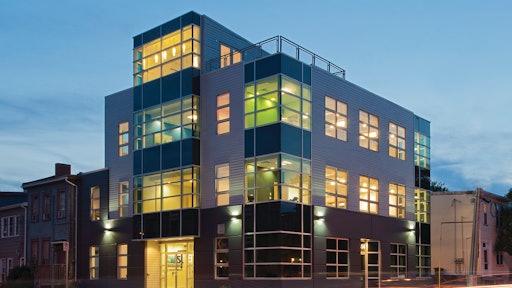
The challenge:
Building a three-and-a-half-story tilt-up concrete office space with only a 50- by 50-foot footprint to work in.
The players:
ISL Web Marketing
B.D. Stevens Limited
Meadow Burke
Nox-Crete Products Group
The process:
Taking home the 2013 TCA Tilt-Up Achievement award in the office division was ISL Web Marketing’s new head office in the North End of Halifax, Nova Scotia, a three-and-a-half-story, 8,100-square-foot office space. Due to the high density location of the land acquired for the project, the building site allowed for only a 50- by 50-foot footprint in which to build. ISL expressed interest in using the tilt-up concrete method for construction. The building lift was done within three feet of a neighboring building.
By using a panel as a fire separator, tilt-up allowed for the building to go up within this confined space. The street could not be closed during the lift because it was home to a fire station, so the lift continued with one lane closure and traffic control measures. By melding tilt-up construction and traditional structural steel clad methods together, the client was able to achieve a unique look to the structure and have an efficient construction timeline. Additionally, the use of BIM modeling using REVIT provided the designers of the building an opportunity to check for interference between the temporary panel bracing and the structural steel floor framing.
For most buildings, the panel bracing falls well below the diaphragm and allows for simple removal of braces once the panels are fully connected to the decking. With ISL's complex geometry, the second and third floor structural steel floor framing was required to be built around the temporary panel bracing until the composite deck on the third floor was fully connected, poured and cured. Only then could the temporary bracing be removed and the second floor composite deck be installed.
Project specifics
- Project wall area: 3,200 sq. ft.
- Project floor area: 8,100 sq. ft.
- Project footprint: 2,700 sq. ft.
- Tallest panel: 23 dr. 3 in.
- Widest panel: 16 ft. 10 in.
- Largest panel: 303 sq. ft.
- Heaviest panel: 25,600 lbs.




























